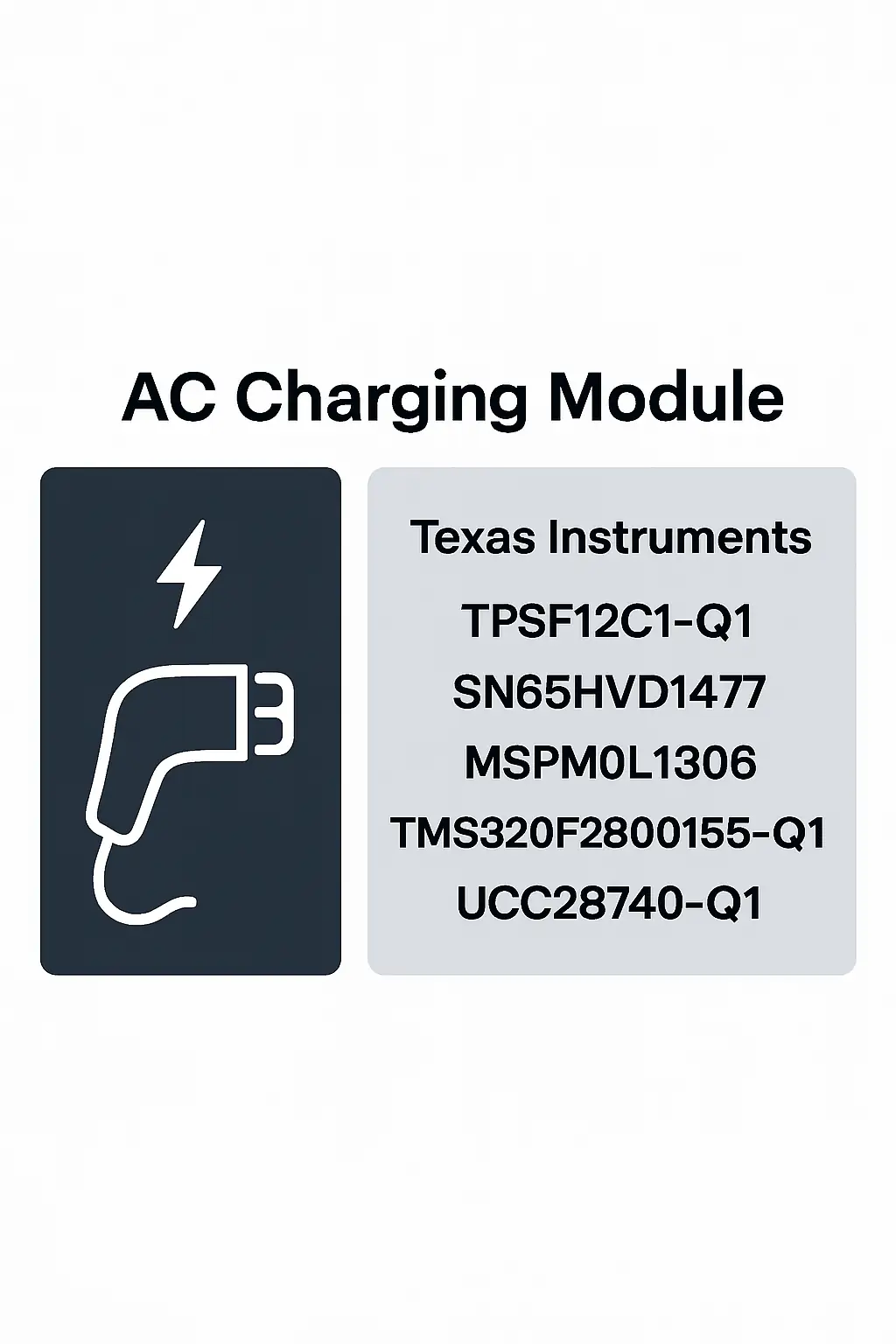AC Charging Module
The AC Charging Module is a critical component within the On-Board Charger (OBC) system of Electrification & Battery Systems in Automotive Electronics. It serves as the core unit responsible for converting alternating current (AC) from an external power source into direct current (DC) to charge the vehicle's high-voltage battery. This module ensures efficient and safe energy transfer, playing a key role in the performance and reliability of electric vehicles (EVs).
Designed for integration into electric and hybrid vehicles, the AC Charging Module supports various charging standards, including Level 1 and Level 2 charging, making it suitable for both home and public charging stations. Its advanced control systems monitor voltage, current, and temperature, ensuring optimal charging efficiency while protecting the battery from overcharging or overheating.
The module is widely used in modern EVs, supporting fast and reliable charging solutions that enhance user convenience and driving range. It also contributes to the overall energy management system of the vehicle, enabling seamless communication with other electronic control units (ECUs).
With the growing demand for electrified transportation, the AC Charging Module is essential for meeting global emission reduction targets and promoting sustainable mobility. Its robust design, high efficiency, and compatibility with different charging infrastructures make it a vital part of the automotive electronics ecosystem. Whether for passenger cars, commercial vehicles, or fleet applications, this module delivers reliable performance and supports the future of electric mobility.
Details
AC Charging Module

Related Parts
| Series Name | Description | Manufacturer Name | Attribute Description |
|---|---|---|---|
| Texas Instruments | 12V, 1A, automotive-grade DC-DC buck converter with integrated MOSFET, 2.1MHz switching frequency, synchronous rectification, over-current and thermal protection, small 2mm × 2mm QFN package. | ||
| Texas Instruments | 3.3V CAN transceiver, 1.5Mbps data rate, wide supply range (3.0–3.6V), low power standby mode, ESD protection up to ±8kV HBM, operates from -40°C to +125°C. | ||
| Texas Instruments | 32-bit ARM Cortex-M0+ core, 8 MHz CPU, 64 KB Flash, 8 KB SRAM, 12-bit ADC, UART, SPI, I2C, GPIO, low-power modes, 1.8V to 3.6V operation, up to 20 MHz external clock support. | ||
| Texas Instruments | 32-bit C2000™ MCU, 120-MHz CPU, 256KB flash, 16KB RAM, FPU, TMU, 12-bit ADC, 8x PWM channels, CAN, SPI, I2C, UART, supports automotive applications. | ||
| Texas Instruments | 32-bit C2000™ MCU, 100-MHz CPU, 128KB flash, 64KB RAM, FPU, TMU, 12-bit ADC, 4x PWM channels, CAN FD, SPI, I2C, UART, supports automotive applications, -40°C to 125°C temperature range. | ||
| Texas Instruments | 32-bit ARM Cortex-R4F core, 80 MHz, 256 KB flash, 64 KB RAM, ECC memory protection, 12-bit ADC, CAN, SPI, UART, I2C, temperature range -40°C to 105°C, 144-pin LQFP package. | ||
| Texas Instruments | Input voltage: 4.5V to 65V; Output current: up to 1A; Switching frequency: 100kHz to 1MHz; Integrated 100V/1.2A GaN FET; Synchronous rectification; Efficiency up to 95%; Operating temperature: -40°C to 150°C. | ||
| Texas Instruments | 650V, 1.5A, 110mΩ RDS(on), 50kHz, current-mode PWM controller, integrated MOSFET, flyback topology, 4.5V–22V VCC, OVP, OCP, OTP protection | ||
| Texas Instruments | 6-pin PFC controller, 100kHz switching, 8V–18V VCC range, current-mode control, integrated soft-start, cycle-by-cycle current limiting, optimized for automotive applications. | ||
| Texas Instruments | 6-pin PFC controller, 100kHz max frequency, 12V UVLO, 4.5V VCC min, 18V VCC max, current-mode control, integrated soft-start, low operating current (2.5mA typical). |








.png?x-oss-process=image/format,webp/resize,h_32)










